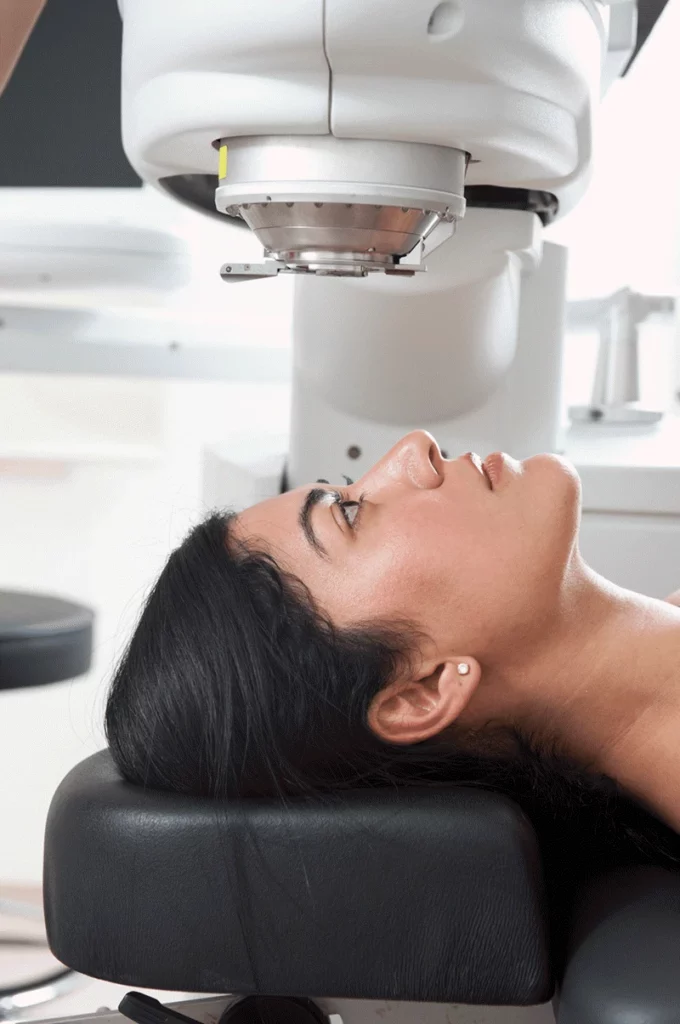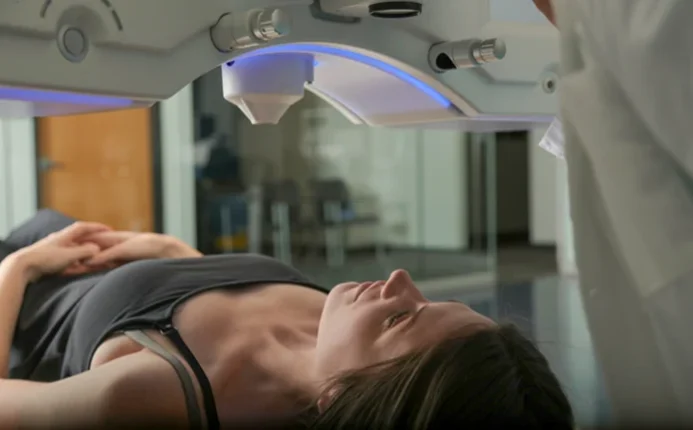Schedule a Free Consultation
LASIK surgery offers a life-changing opportunity to achieve clearer vision and freedom from glasses or contacts.
If you are considering LASIK, we invite you to schedule a free consultation with our experienced surgeons.
We are the trusted LASIK experts, specializing in transforming lives through cutting-edge technology.

We specialize in delivering cutting-edge LASIK vision correction procedures that enhance your vision clarity, freeing you from the hassles of glasses or contacts.
Our highly skilled surgeons leverage cutting-edge technology ensuring the best possible results for every patient.
Whether your aim is to address nearsightedness, farsightedness, or astigmatism, our skilled professionals are committed to delivering exceptional care and achieving outstanding results.
LASIK offers a multitude of benefits, making it a popular choice for individuals seeking freedom from glasses or contact lenses.
One of the most significant benefits of LASIK is the improvement in vision clarity. By reshaping the cornea using advanced technology, LASIK corrects common refractive errors like nearsightedness, farsightedness, and astigmatism. Patients often experience a remarkable enhancement in their ability to see clearly, allowing them to enjoy the world with greater precision and detail.
LASIK liberates individuals from the constant reliance on glasses or contact lenses. Following surgery, many patients find themselves free from the inconvenience and limitations of wearing corrective eyewear. This newfound freedom not only eliminates the hassle of glasses maintenance or contact lens care but also enhances spontaneity and convenience in daily life activities.
LASIK is known for its quick recovery period and fast results. Most patients experience improved vision within a few days after the procedure. The surgery itself is brief and typically painless, allowing individuals to return to their routine activities shortly after. This swift recovery and rapid improvement in vision contribute to the overall satisfaction and convenience of the procedure.
LASIK offers long-lasting vision correction. Once the cornea is reshaped, the corrected vision tends to remain stable for many years. This stability in vision reduces the need for frequent changes in prescription, providing patients with the assurance of prolonged visual clarity and reducing the ongoing costs associated with corrective eyewear.
Understanding how LASIK works requires looking into the step-by-step process and preparing patients for what to expect before, during, and after the surgery.

The LASIK journey begins with a comprehensive consultation. During this visit, the surgeon evaluates your eye health, discusses your medical history, assesses your vision, and determines your candidacy for LASIK.

Based on the evaluation, a personalized treatment plan is created to address specific vision needs. We take into account factors such as refractive errors, corneal shape, and individual eye anatomy to tailor a specialized approach that ensures optimal outcomes for your vision correction.

The LASIK procedure is quick, typically lasting around 15 minutes per eye. It involves creating a corneal flap and using advanced lasik technology to reshape the cornea, correcting vision imperfections.

Following the procedure, a vast majority of patients typically notice a significant improvement in their vision immediately, with minimal discomfort. Full recovery usually occurs within a few days, allowing a swift return to normal.
Determining if LASIK is right for you involves considering several factors including the LASIK eye surgery costs involved. Here are some considerations to help determine if it’s a good option for you:
Good overall eye health is crucial for candidacy and ensuring successful outcomes post-surgery. Conditions like glaucoma, severe dry eyes, or certain corneal diseases may impact candidacy for LASIK as they can interfere with the healing process or affect the stability of the vision correction
Refractive stability is a critical criterion for LASIK candidacy and refers to the consistency and steadiness of your vision prescription over time. For LASIK to be considered, your vision prescription, whether for nearsightedness, farsightedness, or astigmatism, should have remained relatively unchanged for a specific duration, typically around a year.
Age is a significant factor, although it's not the sole determinant for eligibility. While the minimum age requirement for candidates is typically 18 years old, the ideal age range for most individuals seeking LASIK often falls between the late teens and early to mid-adulthood.
Here is some of the feedback from our satisfied clients:
Here are just of the few reasons why our clients consistently choose us for their eye correction needs:
Our LASIK procedure is backed by a team of highly skilled and experienced surgeons specializing in refractive procedures. With years of expertise and a track record of successful surgeries, our team ensures precision, safety, and optimal results.
We pride ourselves on utilizing state-of-the-art technology and advanced equipment for LASIK procedures. Our commitment to staying at the forefront of technological advancements ensures our patients benefit from the most innovative and effective treatments available.
Understanding that each patient is unique, we offer personalized treatment plans tailored to individual needs and eye conditions. Our comprehensive evaluations and consultations ensure that the LASIK procedure is customized to achieve the best possible outcome for each patient.
Yes, LASIK can effectively correct both nearsightedness (myopia) and farsightedness (hyperopia), as well as astigmatism. The procedure involves reshaping the cornea to improve how light is focused on the retina, thereby correcting the refractive error. The specific adjustments made during the surgery will depend on your individual prescription and eye anatomy. Your surgeon will perform a thorough evaluation to determine the best approach for your vision correction needs.
LASIK is not typically used to correct presbyopia, which is the age-related loss of near vision that usually begins around the age of 40. However, there are other surgical options available to address presbyopia. Monovision LASIK is one approach where one eye is corrected for distance vision and the other for near vision, allowing the brain to adapt to using each eye for different tasks. Another option is the use of multifocal or accommodating intraocular lenses (IOLs) through a procedure called refractive lens exchange (RLE). Your eye doctor will help you explore the best options for presbyopia based on your individual needs and lifestyle.
Most patients are able to drive within 24 to 48 hours after LASIK surgery, but this can vary depending on individual recovery and vision stabilization. It’s crucial to have someone drive you home immediately after the procedure, as your vision may be blurry and you might still be under the effects of the numbing drops. Your surgeon will assess your vision during your first follow-up appointment, typically the day after surgery, and advise you on when it is safe to resume driving. It’s important to follow their recommendations to ensure your safety and the safety of others on the road.
Some patients may experience temporary issues with night vision after LASIK, such as glare, halos around lights, or starbursts. These symptoms are usually most noticeable in low-light conditions and tend to diminish over the first few weeks to months as the eyes heal. In most cases, night vision improves significantly as the healing process progresses. If night vision problems persist, it’s important to discuss them with your surgeon, as they may be able to provide additional treatments or recommendations to help alleviate these issues.
Most patients are able to return to work within one to three days after undergoing LASIK surgery. However, the exact time frame can vary depending on your individual healing process and the nature of your job. If your work involves heavy computer use or exposure to dust and debris, you may need a few extra days off to ensure optimal recovery. It’s important to follow your surgeon’s post-operative care instructions and attend all follow-up appointments to monitor your progress. If you experience any discomfort or vision issues, it’s best to consult your eye doctor before resuming work.
Yes, LASIK is typically performed on both eyes during the same appointment. This approach allows for a more convenient recovery period and ensures that both eyes undergo the correction process simultaneously, leading to a more balanced visual outcome. The procedure for each eye usually takes only a few minutes, and the entire appointment, including preparation and post-operative instructions, generally lasts around one to two hours. Your surgeon will discuss the benefits and any potential risks associated with performing LASIK on both eyes at the same time during your consultation.
If you are not a suitable candidate for LASIK, there are several alternative vision correction options available. PRK (Photorefractive Keratectomy) is a type of laser eye surgery similar to LASIK but does not involve creating a corneal flap, making it a good option for those with thinner corneas. Another alternative is SMILE (Small Incision Lenticule Extraction), which is a minimally invasive procedure that also corrects refractive errors without creating a corneal flap. Implantable contact lenses (ICLs) are another option, particularly for those with high refractive errors or thin corneas. These lenses are surgically placed inside the eye to provide permanent vision correction. Finally, Finally, Refractive Lens Exchange (RLE) involves using an artificial intraocular lens (IOL)to replacing the eye’s natural lens and is often considered for older patients or those with presbyopia. Your eye doctor will help you explore these alternatives and determine the best option for your specific needs.
LASIK surgery offers a life-changing opportunity to achieve clearer vision and freedom from glasses or contacts.
If you are considering LASIK, we invite you to schedule a free consultation with our experienced surgeons.